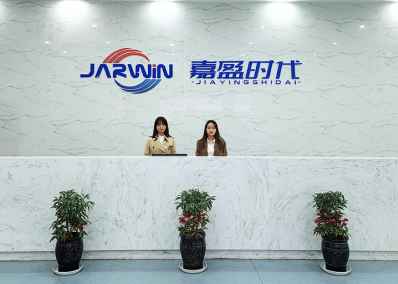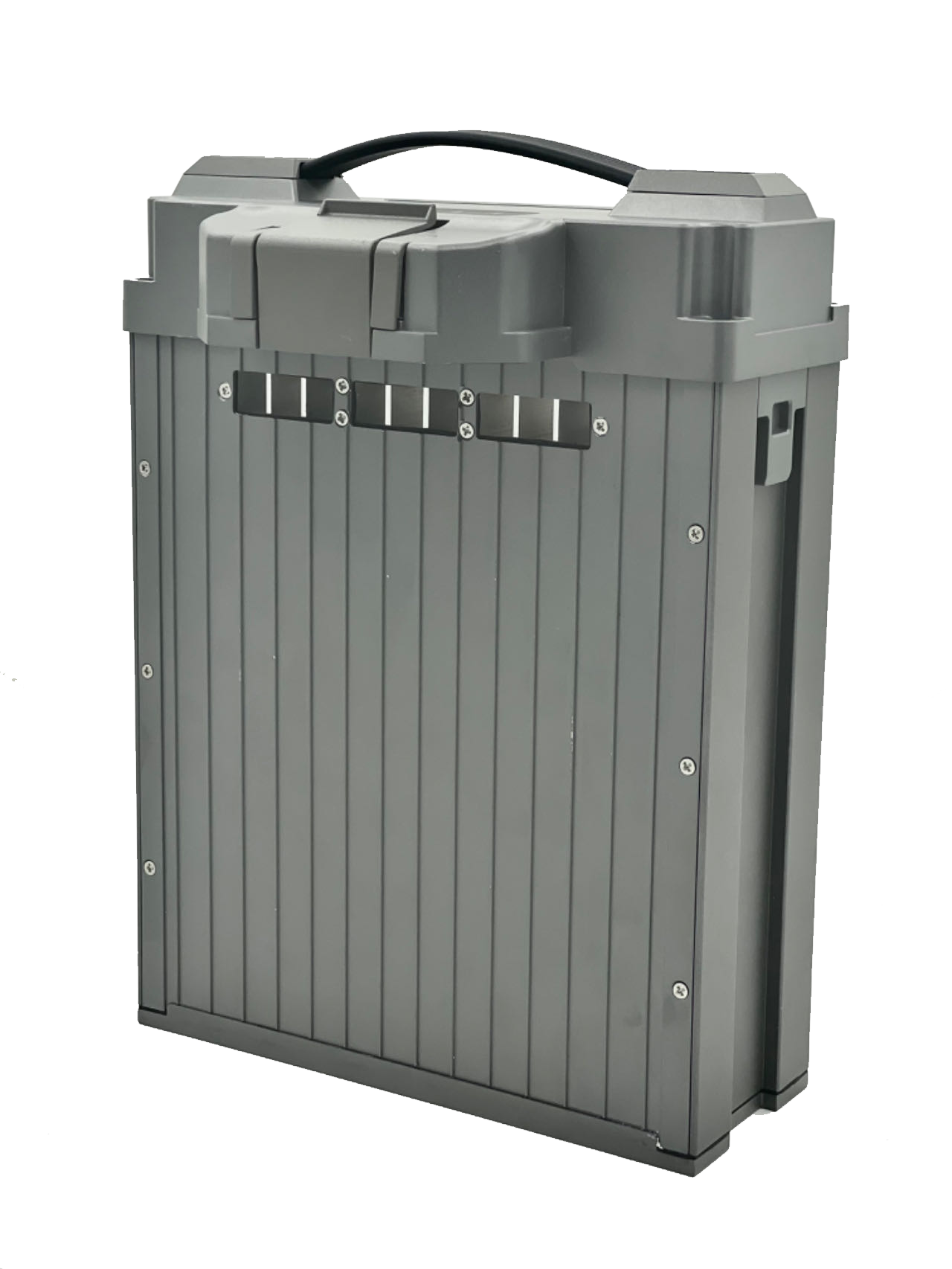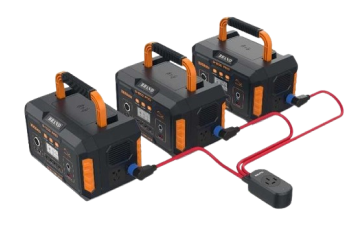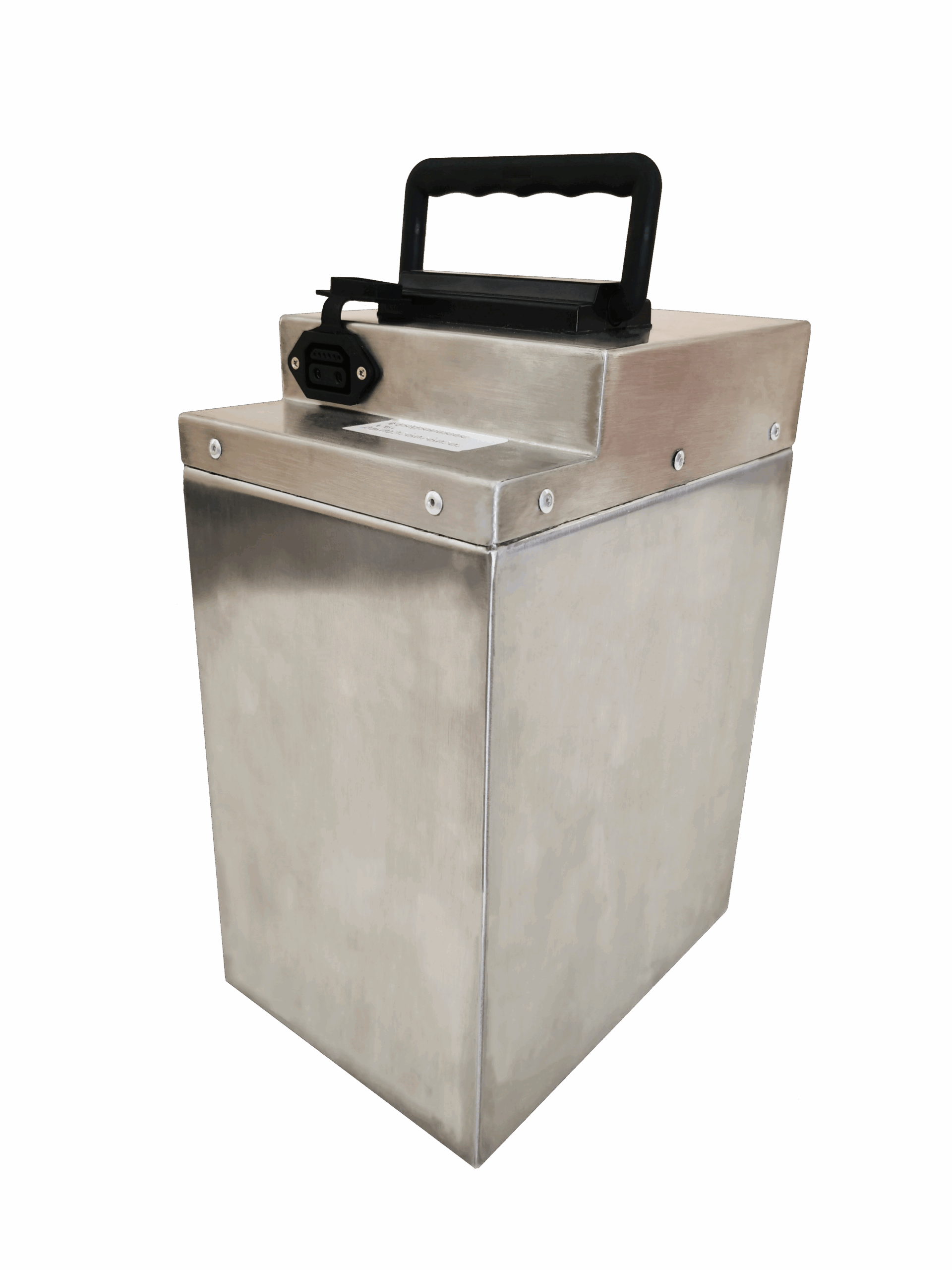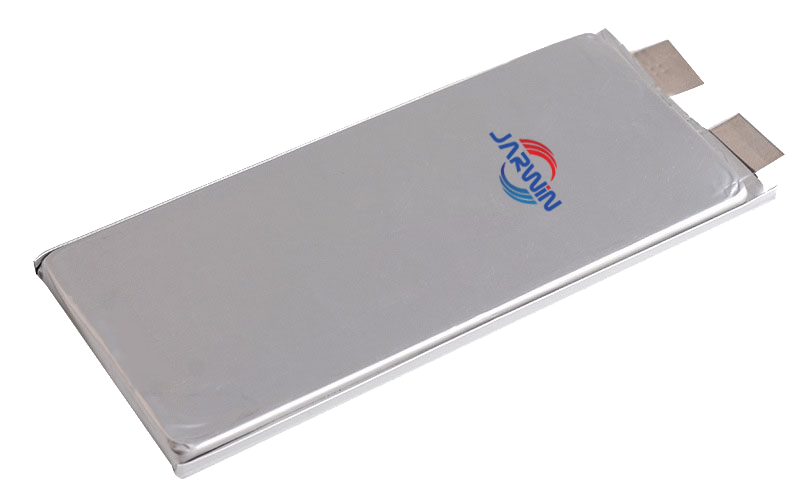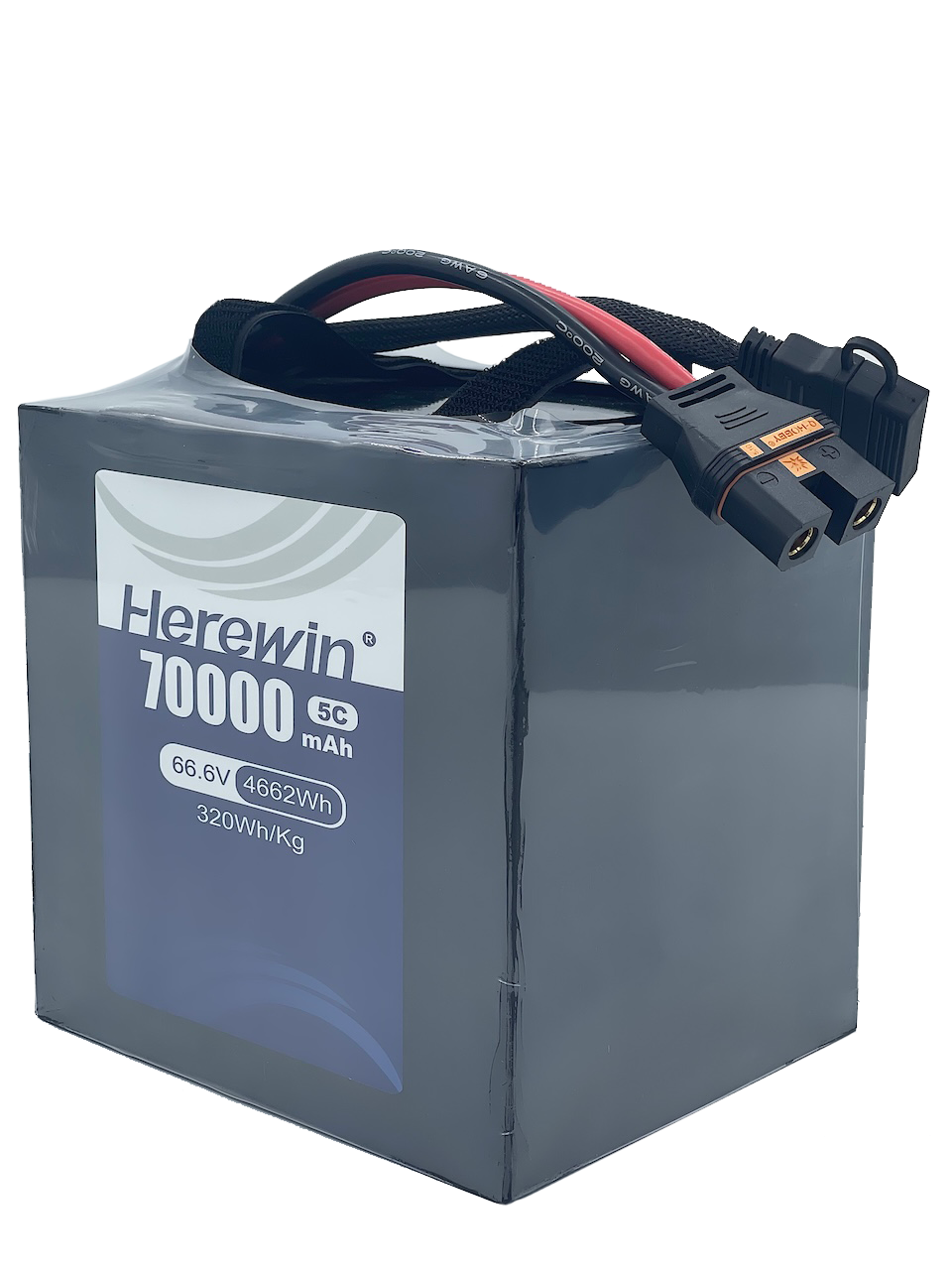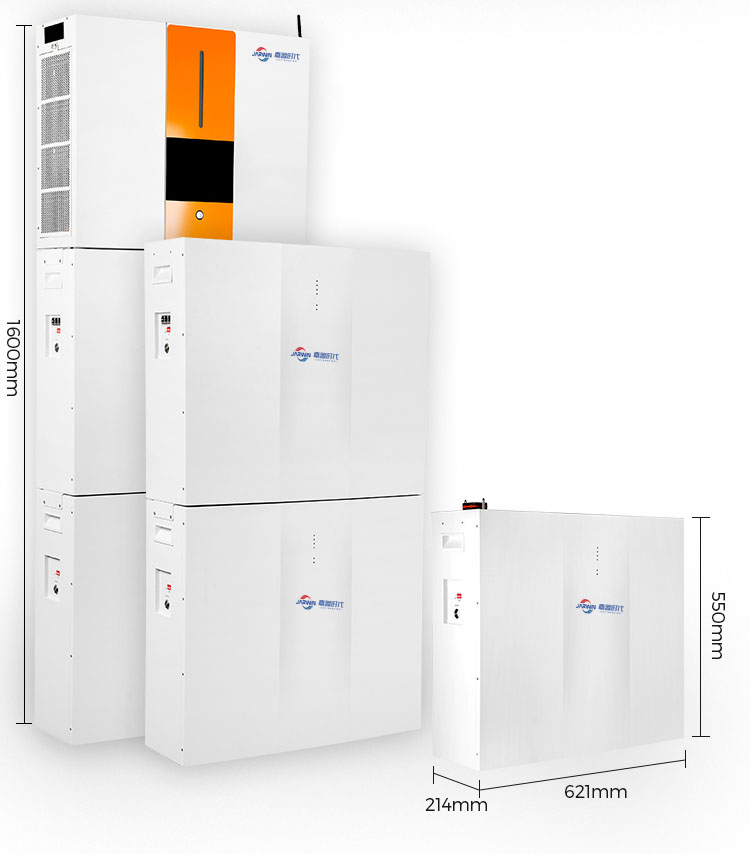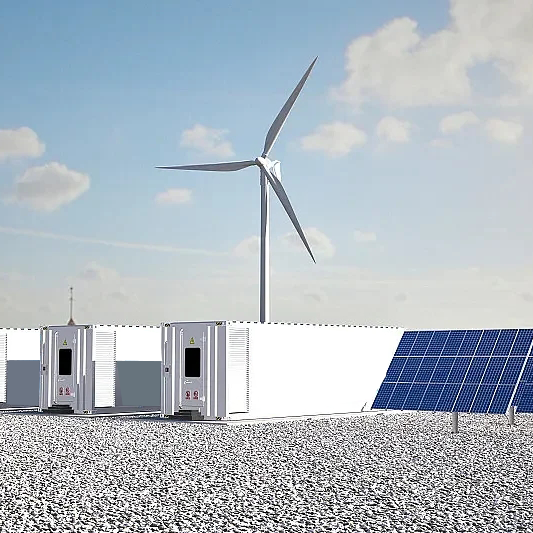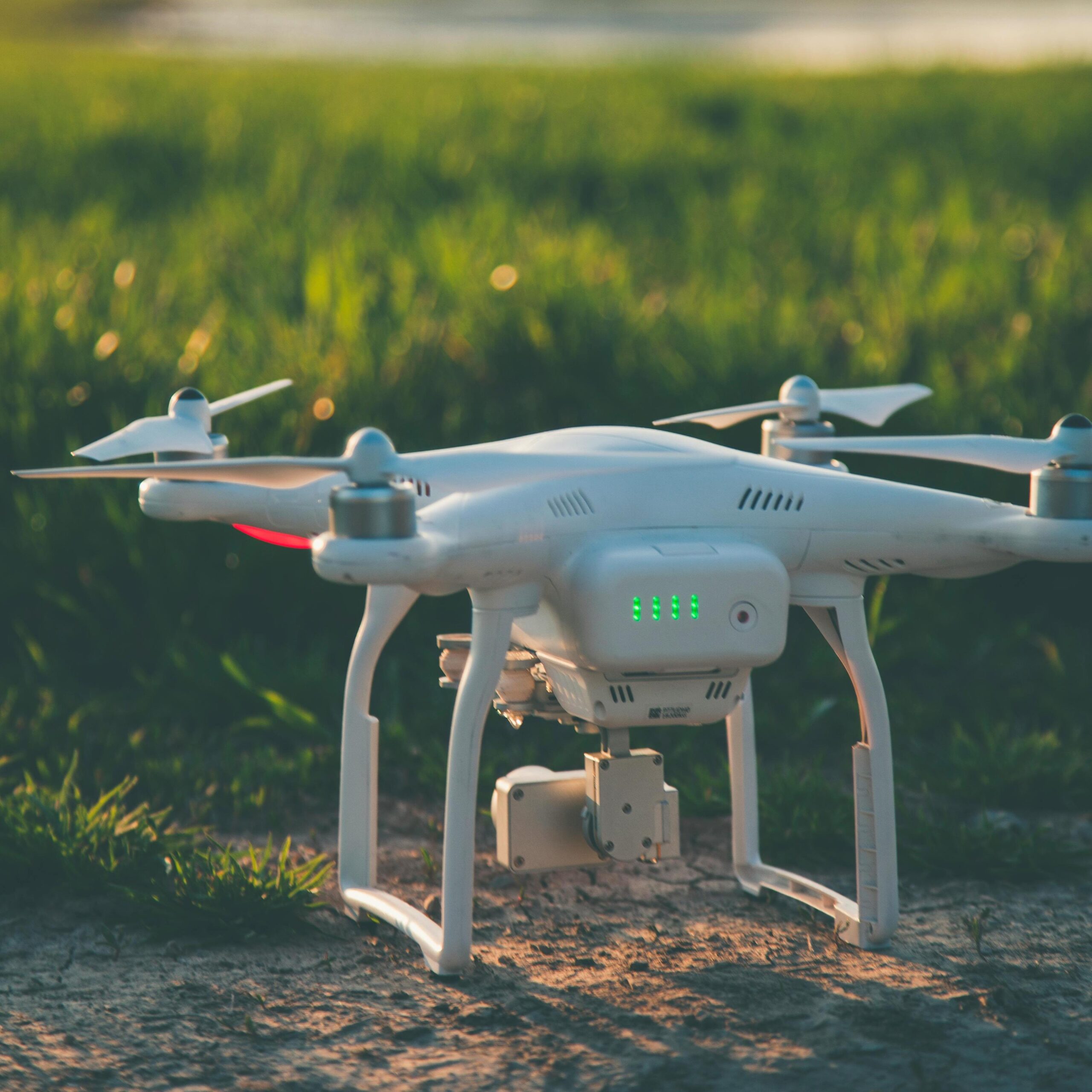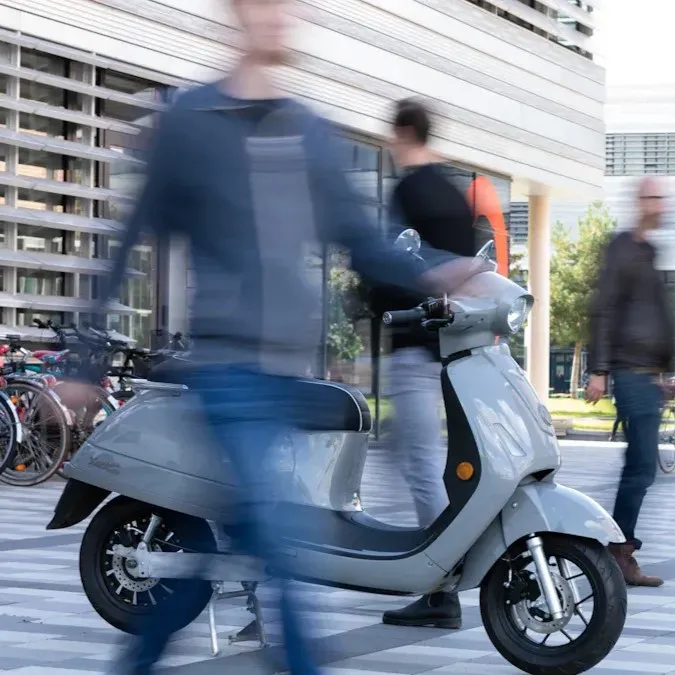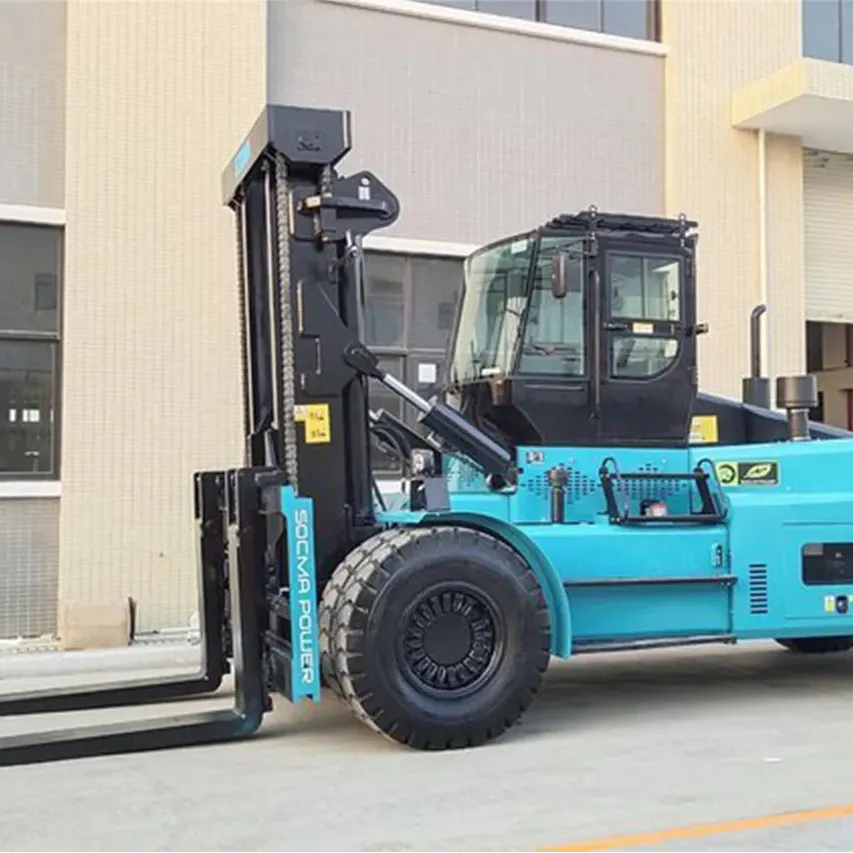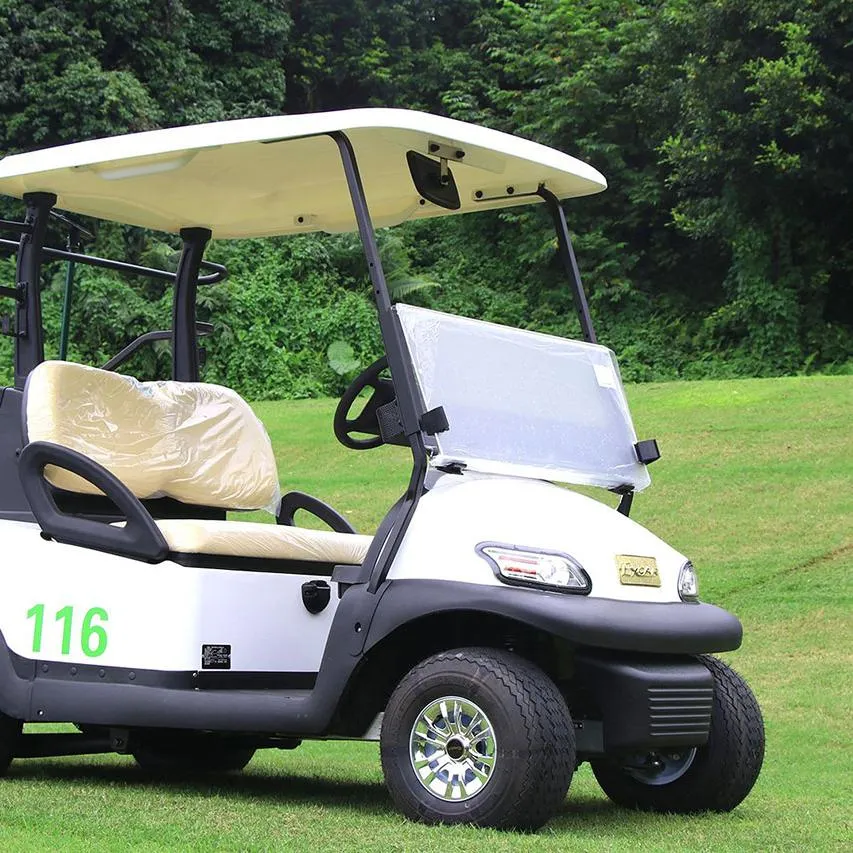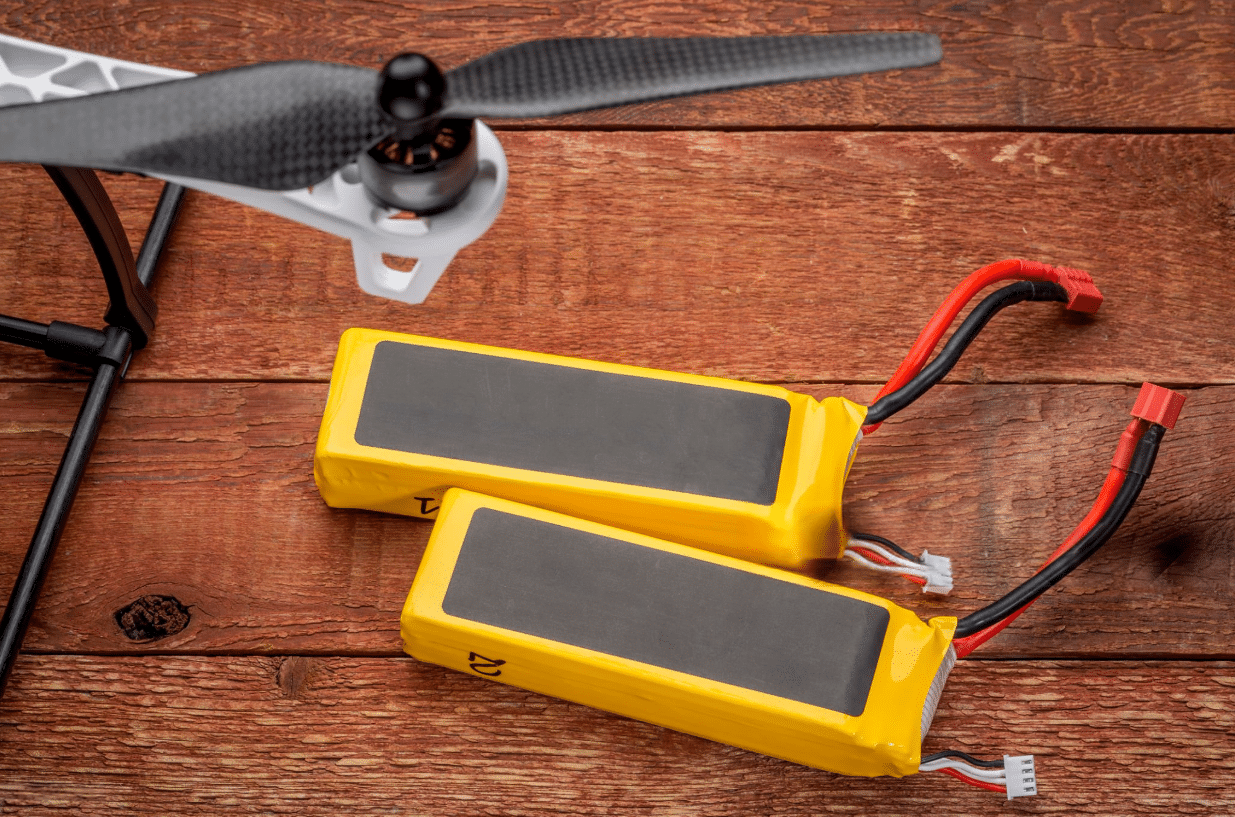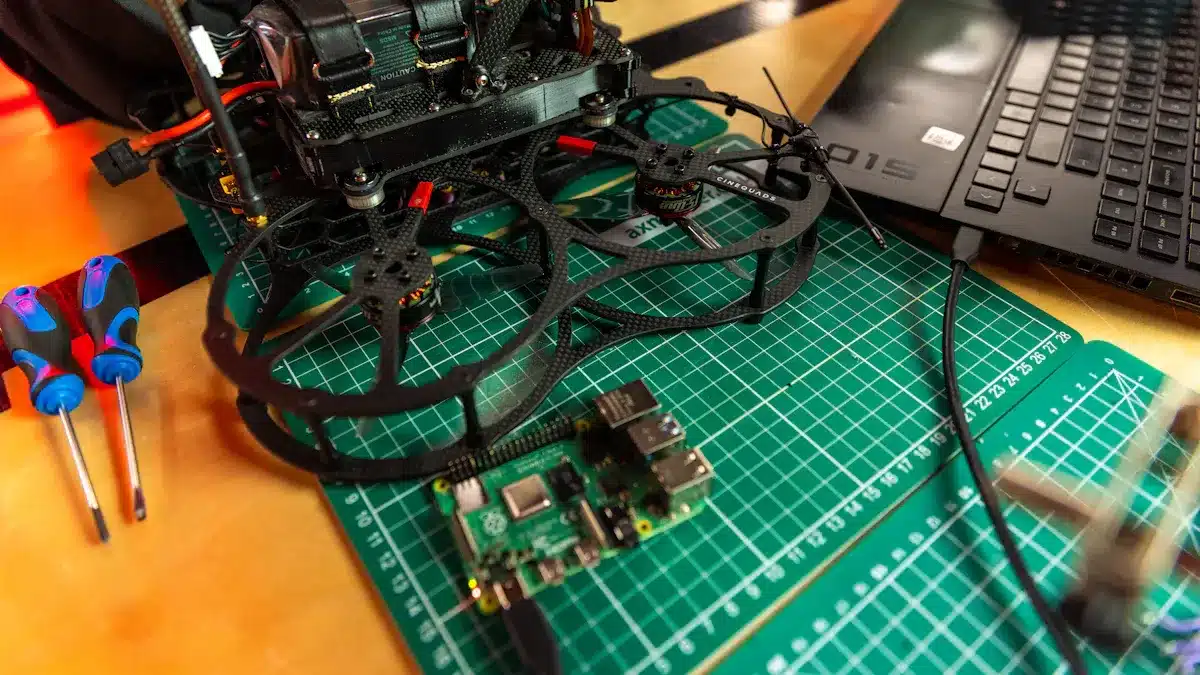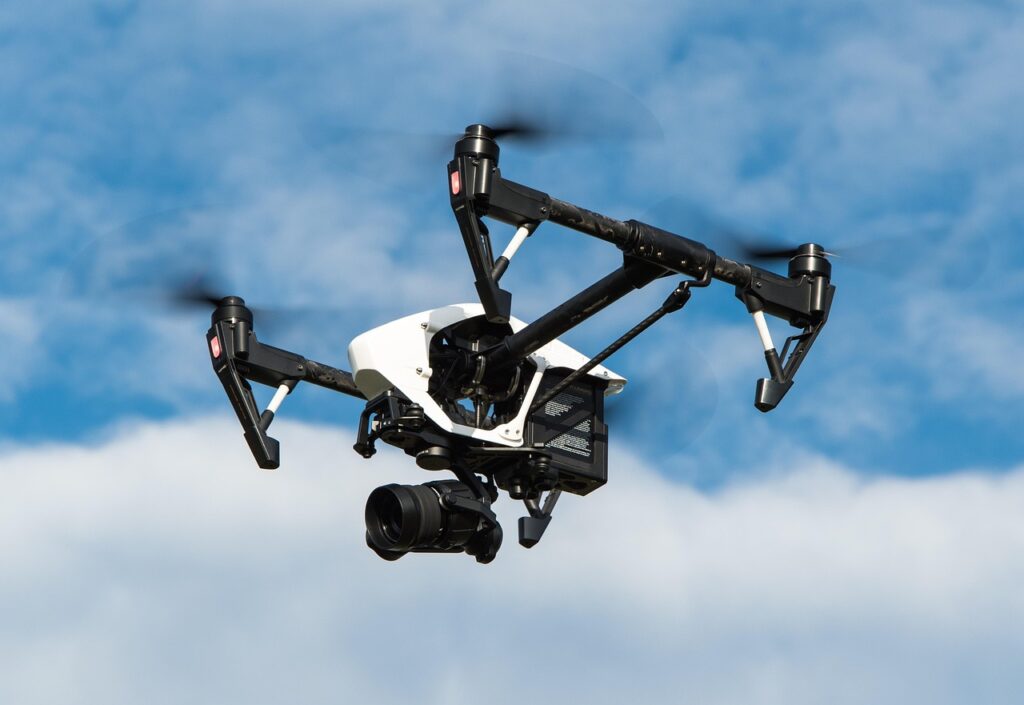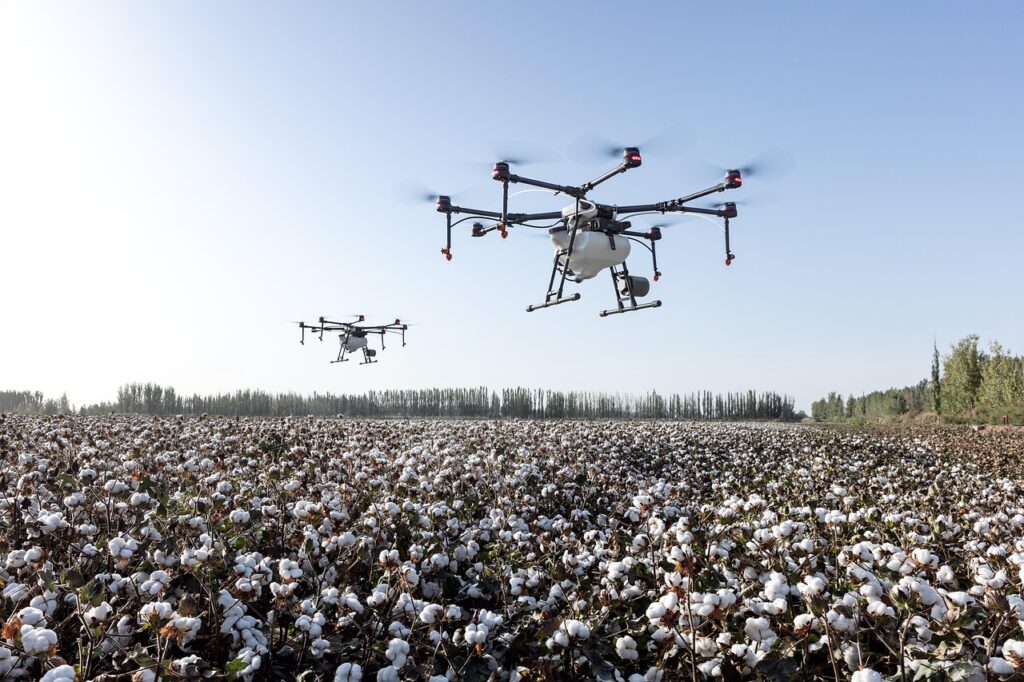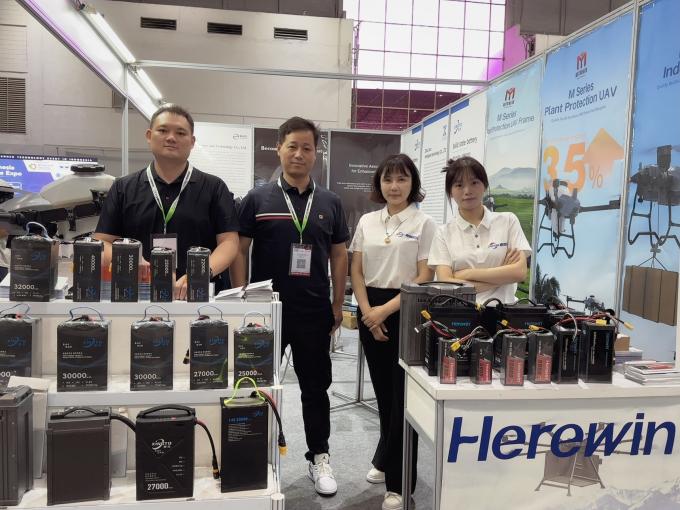
Drone batteries and chargers evolve rapidly, driven by new demands in drone technology. The global market reached $1.2 billion in 2024 and should grow to $3.5 billion by 2033, showing strong momentum across regions.
| Aspect | Data / Trend |
|---|---|
| Market Size (2024) | USD 1.2 billion |
| Projected Market Size (2033) | USD 3.5 billion |
| CAGR (2026-2033) | 12.5% |
| Fastest Growing Application | Agricultural drones: 12% CAGR (2023-2030) |
| Key Innovations | Advanced BMS, smart chargers, solar-powered chargers |

Advancements in battery life, energy density, and charging speed directly shape drone performance and efficiency. Leading brands like herewinpower introduce high-capacity, lightweight battery solutions, setting new standards for safety and reliability. These innovations help the future of drone technology by supporting longer flights, quicker turnaround, and safer operations.
Key Takeaways
- Drone batteries are evolving fast, with lithium polymer batteries leading to longer flights and better safety at lower costs.
- Innovations like high energy density, semi-solid-state batteries, and smart charging improve drone performance and reduce downtime.
- herewinpower stands out by offering lightweight, safe, and long-lasting batteries that work well in extreme conditions.
- Sustainability efforts, including battery recycling and eco-friendly materials, help protect the environment and support industry growth.
- Drones with better batteries enable important jobs in delivery, agriculture, emergency response, and public safety, making operations safer and more efficient.
Key Trends
Drone Batteries Evolution
Drone batteries have changed a lot over the past decade. Early drones used basic lithium-ion batteries. Today, most drones use advanced lithium-polymer (LiPo) batteries. These new batteries offer longer flight times and better safety. The market share for LiPo batteries has reached 62.1%. Over the last three years, LiPo batteries have given drones 15% longer flight times and 12% fewer overheating problems. Prices have dropped by 10%, making drones more affordable for many people.
| Aspect | Historical/Recent Data & Trends (Last Decade) |
|---|---|
| Battery Type Evolution | Shift from traditional lithium-ion to advanced Lithium Polymer (LiPo) batteries, now holding 62.1% market share. |
| Battery Capacity | 5000-10000 mAh segment leads with 41.3% market share; 20% increase in flight efficiency recently. |
| Cell Technology | 30% of R&D investments focused on improving cell durability and energy density. 25% reduction in cell degradation. |
| Market Growth & Size | Market valued at $5.21B in 2023, projected to reach $15.40B by 2032 with CAGR of 12.8%. |
| Battery Performance | Max flight time now reaches 2 hours; average battery weight is about 250 grams. |
| Innovation & Market Dynamics | 180 patents filed in 2022; 15 new companies entered market; cell production costs dropped by 18%. |
| Sustainability Efforts | 50,000 batteries recycled in 2022; 40 specialized recycling centers established globally. |
The demand for better drone batteries comes from many industries. Agriculture, logistics, and emergency services all need drones that can fly longer and carry more weight. Companies invest in research and development to make batteries safer and more powerful. Over 180 new patents appeared in 2022 alone. The number of drones sold each year keeps rising, with sales expected to grow from 2.4 million units in 2023 to 9.3 million units in 2028.
The market for drone battery technologies is growing fast. In 2024, the market value reached $8.7 billion. By 2031, experts expect it to hit $39.1 billion. The Asia-Pacific region leads this growth because of rapid industrialization and urbanization. North America invests heavily in research, while Europe focuses on environmental rules and recycling.
Note: The data above comes from trusted sources like D&B Hoovers, Bloomberg, and interviews with industry experts. This ensures the information is reliable and up to date.
Why Innovation Matters
Drone innovation shapes the future of drone technology. New batteries help drones fly longer, work in tough weather, and stay safe during flights. Companies like DJI, LG Chem, and herewinpower lead the way by launching new products and forming partnerships. They focus on making batteries lighter, more powerful, and safer.
- Next-generation batteries, such as solid-state and hybrid types, promise two to three times more energy than current lithium-ion batteries. This could let drones fly for hours instead of minutes.
- Leading manufacturers invest in new chemistries and miniaturization. These changes improve drone performance and allow drones to carry heavier loads.
- Startups and big companies both work on ultra-fast charging and modular battery designs. These features help drones get back in the air quickly after landing.
The need for better drone batteries grows as drones take on more jobs. Drones now deliver medical supplies, inspect buildings, and help in emergencies. For example, research shows that drones delivering AEDs (automated external defibrillators) can save lives by reaching people faster than ambulances. In construction, drones reduce worker injuries by taking over dangerous tasks. In railroads and transportation, drones inspect tracks and bridges, keeping workers safe.
| Industry / Application | Evidence Summary | Source / Study Mentioned |
|---|---|---|
| Construction | Drones reduce risk by replacing hazardous tasks. 4,764 fatalities in 2021, mostly from falls. | OSHA, National Safety Council survey (2020) |
| Railroads and Transportation | Drones used for accident investigation and inspection, reducing worker exposure to hazards. | Rail Accident Investigation Branch (UK), Indian Railways |
| Emergency Medical Services | Drones deliver AEDs and naloxone rapidly, improving emergency response times and access. | CDC, NIOSH, PMC article on drone EMS delivery |
| General Workplace Safety | Drones with advanced sensors monitor hazardous environments remotely, reducing risks. | OSHA, CDC, NIOSH, National Safety Council |
Drone innovation also helps the environment. Companies recycle more batteries and use safer materials. In 2022, 50,000 batteries were recycled, and 40 recycling centers opened worldwide. These efforts support a cleaner planet and help meet new environmental rules.
The drone battery market remains highly competitive. Companies must keep innovating to stay ahead. They form partnerships, invest in research, and focus on safety and performance. The market faces challenges like pricing pressures and supply chain issues, but strong innovation keeps the industry moving forward.
Current Drone Batteries
Battery Life Challenges
Drone batteries play a key role in how long and how well drones can fly. Most drones today use lithium polymer batteries. These batteries power many agricultural drones because they offer high battery capacity and stable performance.
Many challenges affect battery life and safety. Users sometimes damage wires during welding or bump batteries, which can cause short circuits or even fires. Pesticide residue can corrode battery materials, especially in agricultural drones. Fast charging helps restore up to 80% battery capacity in less than 30 minutes, but charging too quickly can overheat and damage the battery. Mixing old and new batteries or using different batches together can lead to uneven voltage and reduce the lifespan of the drone battery pack. Storing fully charged batteries for more than three days can cause swelling and shorten battery life.
Lithium-ion batteries have improved energy density, which means drones can fly longer without extra weight. These batteries also last longer and support more charge cycles than older types. Smart battery management systems help balance voltage and improve reliability, making sure the drone battery pack works safely and efficiently. Some new hybrid systems combine lithium-ion with solar or hydrogen fuel cells to extend flight time even more.
Tip: Regular inspection, cleaning, and storing batteries at the right temperature help prevent corrosion and swelling. Always use a balanced charger to keep voltage levels safe.
herewinpower Drone Battery Features
herewinpower stands out in the field of lithium battery technology. The company designs advanced drone battery packs that focus on high energy density and lightweight construction. The HereWin Soft Pack UAV Battery uses aluminum-plastic film encapsulation, which makes it lighter and more efficient than many competitors.
Key features include:
- Ultra-long cycle life, supporting hundreds of charge cycles for the longest lasting battery performance.
- Full-scenario temperature adaptability, allowing drones to operate in extreme heat or cold.
- Enhanced safety features, reducing risks of fire or swelling.
- Customizable options to fit different drone models and mission needs.
A table below summarizes the main advantages:
| Feature | Benefit |
|---|---|
| High energy density | Longer flight times |
| Lightweight design | Better maneuverability |
| Wide temperature adaptability | Reliable in harsh environments |
| Long cycle life | Lower replacement costs |
| Enhanced safety | Improved reliability and peace of mind |
herewinpower’s focus on lithium battery technology and innovation helps drones achieve better battery life, higher capacity, and safer operations. Their advanced drone battery pack solutions support a wide range of applications, from aerial photography to logistics.
Advancements in Drone Battery Technologies

High Energy Density
High energy density has become a crucial factor in drone battery technologies. Drones need batteries that store more energy without adding extra weight. Lithium-ion batteries lead the market because they offer high energy and power density. These batteries help drones fly longer and carry heavier loads. Military drones use lithium-ion batteries for rapid deployment and precision. Solid-state batteries promise even higher energy density, which means drones can fly farther and safer.
Recent industry reports highlight the high energy density potential of hydrogen fuel cells, which can be two to three times greater than that of conventional lithium-ion batteries. Hydrogen-powered drones have demonstrated extended flight durations and ranges—reaching several hours or hundreds of kilometers in specific applications—though such performance depends heavily on the drone model and operating conditions.
Meanwhile, some companies have developed high-performance semi-solid-state lithium-ion batteries with energy densities reaching up to 350 Wh/kg, far exceeding earlier-generation figures. These advanced batteries help reduce overall drone weight and significantly extend flight times, making them well-suited for applications in agriculture, security, and industrial inspection. In addition, progress in battery management systems (BMS) has further enhanced battery safety, lifespan, and performance reliability.
Note: High energy density allows drones to perform longer missions and reduces the need for frequent recharging.
Semi-Solid-State Solutions
Semi-solid-state batteries represent a major step forward in lithium battery technology. These batteries use gel-like electrolytes, which improve ionic conductivity and make manufacturing easier than fully solid-state batteries. Semi-solid-state batteries offer a balance between energy density and cost. They are less expensive and closer to mass-market readiness than fully solid-state batteries.
A comparison of battery types shows the advantages of semi-solid-state solutions:
| Feature | Lithium-ion Batteries | Solid-State Batteries | Semi-Solid-State Batteries |
|---|---|---|---|
| Electrolyte Type | Liquid | Solid | Gel/Paste |
| Energy Density (Wh/kg) | ~200–260 | 400–500+ | ~300–350 |
| Cycle Life | ~500–1500 | 2000–5000 | 1000–3000 |
| Fire Risk | High | Very Low | Low |
| Manufacturing Cost | Low/Medium | Very High | Medium |
| Commercial Use | Widely Available | Limited R&D | Emerging |
| Charging Time | 1–2 hours | 30–60 minutes | 30–90 minutes |
| Temperature Tolerance | Poor | Excellent | Good |
Semi-solid-state batteries improve safety and extend battery life. They also support longer flight times and higher payloads. However, challenges remain. Scalability and cost competitiveness still need improvement. Raw material supply and lack of standardization can affect production. Despite these challenges, major companies continue to invest in this technology, showing strong commercial interest.
Long Battery Life Innovations
Long battery life is essential for drones in commercial, industrial, and emergency applications. Next-generation batteries, such as lithium-sulfur and lithium-silicon, are changing the industry. These batteries provide longer flight durations, higher payload capacities, and improved safety. BEI’s new battery technology achieves an energy density of 410 Wh/kg. Drones using this battery can double their flight time and operate in extreme cold, flying for 40 minutes at -20°C.
The integration of AI in battery management systems helps optimize energy use. Drones can now monitor battery health in real time and predict maintenance needs. Fast-charging capabilities and thermal management also support long battery life. These innovations help drones perform longer missions and reduce downtime.
Tip: Long battery life reduces operational costs and increases efficiency for drone fleets.
herewinpower R&D and Achievements
herewinpower leads the industry with advanced lithium battery technology and strong research capabilities. The company invests in next-generation batteries, focusing on high energy density, safety, and long cycle life. herewinpower’s R&D team includes experts with over 20 years of experience. The company operates a dedicated research institute and collaborates with top universities.
herewinpower’s drone battery pack solutions use aluminum-plastic film encapsulation for lightweight and efficient performance. The company’s semi-solid-state batteries offer energy densities above 350 Wh/kg and cycle lives over 1500 cycles. These batteries work well in extreme temperatures and support fast charging. herewinpower’s products meet international standards and serve leading brands.
The company’s achievements include:
- Launching high-performance batteries for drones in logistics, agriculture, and emergency rescue.
- Developing battery management systems with AI for real-time monitoring and predictive maintenance.
- Expanding production capacity with new factories in China, and Indonesia.
- Receiving certifications such as UN38.3, MSDS, CE, and RoHS for global market access.
herewinpower’s commitment to battery innovations and sustainability drives the future of drone battery technologies. The company continues to explore new materials and solutions to deliver the longest lasting battery and support the growing needs of the drone industry.
Charging Solutions for Drones

Fast Charging
Fast-charging solutions help drone operators reduce downtime and increase productivity. Modern fast charging systems use advanced charging profiles, such as Constant Current–Constant Voltage (CC-CV), to safely deliver power to the battery. These systems monitor voltage and current in real time, which helps protect the battery from damage. Many drones now reach full charge in about 70 minutes, which is faster than the 80–90 minutes needed for older models like the DJI Phantom 4.
| Benchmark Metric | Value/Description |
|---|---|
| Charging Time | 70 minutes (improved from 80-90 minutes typical for DJI Phantom 4) |
| Charging Current Profile | Controlled CC-CV charging profile |
| Communication Latency | Approximately 100 milliseconds |
| Packet Loss Rate | Extremely low at 0.01% |
| Autonomous Charging Control | Intelligent monitoring and autonomous management of battery charging |
| Validation Tools | Voltage/current curves and network analysis used to verify performance |
These improvements mean drones can return to work quickly. Faster charging times support industries that rely on rapid deployment, such as emergency services and agriculture.
Wireless Charging
Wireless charging technology is changing how drones recharge. Resonant inductive charging allows drones to receive energy over longer distances and even when not perfectly aligned with the charging pad. This method is more efficient and flexible than traditional wired charging. Capacitive charging and RF charging also show promise. RF charging can power several drones at once without direct contact. Laser charging offers long-range wireless power, which could help drones stay in the air longer.
Wireless charging reduces downtime and supports continuous drone use. Operators do not need to plug in cables, so drones can land and recharge automatically. This technology helps enable autonomous drone fleets.
Tip: Wireless charging stations can be placed in the field, allowing drones to recharge without human help.
Smart Charging Systems
Smart charging systems use sensors and software to monitor battery health and charging status. These systems adjust charging speed and power based on the battery’s needs. They help prevent overcharging and overheating, which extends battery life. Smart chargers often connect to cloud platforms, so operators can track charging cycles and plan maintenance.
Some smart charging stations include features like automatic battery swapping and remote diagnostics. These tools help drone fleets operate smoothly and safely. Smart charging systems play a key role in supporting the next generation of drone operations.
Safety and Reliability
Battery Management
Battery management plays a vital role in drone safety and reliability. Modern drones use advanced battery management systems (BMS) that monitor voltage, current, temperature, and cell health in real time. DJI’s intelligent flight batteries, for example, use BMS to send important data to the drone controller. This system can trigger low-voltage alarms and prevent overcharging or over-discharging. When the battery level drops too low, the BMS activates a return-to-home function, guiding the drone back safely. This feature helps prevent loss or damage from battery depletion.
Many agricultural drones use active cooling systems to manage heat during long flights. Delivery drones often rely on hybrid thermal management to keep batteries efficient and safe, even during fast charging. These systems extend battery life and improve operational safety. Battery monitoring tracks voltage, temperature, and current in each cell. Cell balancing keeps weaker cells from wearing out too soon, which helps maintain consistent performance. Protection mechanisms guard against overheating, short circuits, and other risks. Custom BMS solutions for UAVs optimize battery life and reliability, especially in demanding jobs.
Note: Advanced BMS technologies now use predictive analytics and AI to further improve safety and efficiency.
Enhanced Safety Features
Enhanced safety features in drone batteries help prevent accidents and extend battery lifespan. Operators monitor battery temperature to keep it within safe limits during storage and flight. They inspect batteries for swelling or damage, which can signal problems. Tracking charge cycles and storage conditions helps assess battery health. Performance metrics like voltage stability and internal resistance reveal signs of aging or damage.
Many drones include emergency procedures such as fire containment and emergency landing protocols. Over-discharge protection stops cell voltage from dropping too low, which can cause gas production or internal shorting. Over-charge protection prevents dangerous heat buildup. Lithium polymer batteries need external protections, such as battery protection ICs, resettable thermal devices, and surface-mount fuses. These components help prevent fires, internal shorting, and other failures.
A strong battery maintenance plan includes regular capacity testing and retiring old batteries based on cycle count or age. These steps ensure safe and reliable drone operation in all environments.
Sustainability in Drone Batteries
Eco-Friendly Materials
Sustainability has become a top priority in the drone industry. Companies now focus on using eco-friendly materials in battery production. The choice of battery chemistry plays a big role in reducing environmental impact. Many manufacturers compare Nickel Cobalt Manganese (NCM) and Lithium Iron Phosphate (LFP) batteries. The table below shows how these chemistries differ:
| Aspect | CATL (NCM Chemistry) | BYD (LFP Chemistry) |
|---|---|---|
| Battery Chemistry | Nickel Cobalt Manganese (NCM) | Lithium Iron Phosphate (LFP) |
| Key Materials | Nickel, Cobalt (resource-intensive, toxic) | Iron, Phosphate (no cobalt or nickel) |
| Environmental Impact | High due to mining and processing of metals | Lower due to absence of cobalt and nickel |
| Ethical Concerns | Cobalt mining linked to ecological and social issues | Reduced ethical concerns due to material choice |
| Carbon Emissions | Higher energy consumption and emissions | More energy-efficient production, lower emissions |
| Recycling Initiatives | Present but challenged by complex materials | Present and facilitated by simpler chemistry |
LFP batteries use iron and phosphate, which are safer for the environment. They also support better energy efficiency and lower carbon emissions. A life cycle assessment shows that battery materials have a big effect on human health and the environment. Choosing eco-friendly energy solutions helps reduce these impacts. Many solar-powered drones now use LFP batteries to support cleaner operations.
Battery Reuse and Recycling
Battery reuse and recycling help lower waste and support sustainability. The drone industry has seen a 40% increase in recycling and reuse programs in 2023. Eco-friendly drone batteries now hold a 35% market share. Companies also use more recycled electronics, with a 30% increase last year. These steps help keep old batteries out of landfills and save valuable materials.
Solar-powered drones benefit from these recycling efforts. Reused batteries can power training flights or less demanding missions. Recycling programs recover metals and other parts for new batteries. These actions support a cleaner future and help the industry grow responsibly.
Tip: Recycling batteries and choosing eco-friendly materials help protect the planet for future generations.
Performance Impacts
Longer Flight Times
Longer drone flight time changes how operators plan and complete missions. Drones with high-capacity batteries can stay in the air for hours instead of minutes. This improvement means fewer landings and takeoffs, which reduces downtime and increases safety. In a recent case study, a hybrid drone with a 3-hour endurance completed a LiDAR survey in less than one day. Traditional drones needed two days and many battery swaps for the same task. The longer drone flight time allowed the drone to cover over 500 acres in a single flight. Operators collected data without stopping, which improved productivity and reduced costs.
Motor efficiency also plays a big role in flight duration. Efficient motors use less power and create less heat. This helps conserve battery energy and extends drone flight time. Operators can monitor motor performance with tools like PWM values and flight health scores. They can also improve efficiency by using brushless motors, optimizing propellers, and keeping a steady flight speed. These strategies help drones fly longer and use less energy.
Tip: Removing extra weight and using lightweight materials can further increase extended flight time and operational efficiency.
Payload and Efficiency
Payload capacity affects how much a drone can carry and how efficiently it uses energy. Researchers use different models to study the relationship between payload and energy consumption. The table below compares several models that analyze these factors:
| Model Name | Key Variables Considered | Payload Inclusion | Notes on Energy Efficiency and Payload Impact |
|---|---|---|---|
| Eldosuky | Weight, thrust, airspeed, aerodynamic drag, propulsion efficiency | No explicit payload | Shows nonlinear effect of weight on power consumption |
| Eman | Drone mass, payload mass, altitude, airspeed, drag coefficient, propulsion efficiency | Yes | Includes payload and environmental effects on power use |
| Fick’s Law Algorithm Optimizer | Three phases of motion (diffusion, equilibrium, steady-state) | N/A | Improves prediction accuracy for energy efficiency |
The Eman model includes payload mass and environmental factors, giving a clear picture of how extra weight affects energy use. Drones with higher payloads need more power, which can reduce flight time. However, using batteries with higher energy density and optimizing flight techniques can help balance payload and efficiency. Operators can select the right battery and manage weight to achieve the best results for each mission.
Industry Applications
Logistics and Delivery
Drones have changed how companies deliver packages and supplies. Multi-rotor models lead the market because they move easily in tight spaces. Most delivery drones carry small packages, usually under 2 kilograms, which works well for food, mail, and health products. Companies like Amazon, Walmart, and Domino’s use drones for fast, local deliveries. These drones often complete trips in less than 30 minutes. Some models now travel over 25 kilometers, helping with longer routes in food, healthcare, and e-commerce. Heavy-lift drones are growing quickly, making it possible to deliver larger items and serve more customers. North America leads the market, but Asia-Pacific is growing fast due to online shopping and city growth. Companies invest in research and partnerships to improve drone delivery systems.
- Drones deliver parcels, food, and medical supplies.
- Healthcare delivery grows as drones transport vaccines and blood.
- Military logistics use drones to reduce risks and speed up resupply.
- E-commerce and logistics companies adopt drones for last-mile delivery.
Agriculture and Surveying
Farmers and surveyors use drones to save time and money. Drones spray fertilizer and water with precision, reducing waste. They scout crops using special cameras to find pests and diseases early. Livestock managers track animals and check their health from a distance. Drones map fields and create detailed images of soil and crops, covering up to 1,000 acres in one flight. Mapping costs range from $2 to $10 per acre, while advanced lidar surveys cost more. Drones help farmers make better decisions and improve safety by reducing the need for manual checks.
| Category | Use Case | Benefit |
|---|---|---|
| Crop Management | Fertilizer Spraying | Reduces waste, ensures even coverage |
| Livestock | Herd Monitoring | Tracks location, checks health remotely |
| Field Mapping | Surveying | Covers large areas, lowers survey costs |
| Imaging | Multispectral, Thermal | Finds crop issues, water stress |
Emergency and Surveillance
Drones play a key role in emergencies and public safety. After Hurricane Harvey, 43 groups used drones to assess damage and speed up insurance claims. During Typhoon Hagibis, drones delivered relief goods to areas cut off by floods. In the California wildfires, drones provided aerial images within 48 hours to help firefighters. Police and rescue teams use drones for search and rescue, disaster management, and SWAT operations. Drones reach places faster than vehicles and give a bird’s-eye view for better decisions. Thermal sensors help find people in large areas. Automated drone fleets allow 24/7 surveillance and quick response in dangerous situations.
Drones save lives by delivering medical supplies, providing real-time images, and reducing risks for emergency workers.
Future Outlook
AI and Smart Drones
Artificial intelligence is changing how drones work in many industries. AI-powered drones now help farmers check crop health and spot pests. They inspect bridges and buildings for faults in real time. Delivery services use drones to bring packages quickly and lower emissions. Public safety teams rely on drones for search and rescue or to find hazards. Military groups use drones for border patrol and target detection.
The global market for AI in drone technology is growing fast. Experts predict it will rise from $12.5 billion in 2023 to $206.9 billion by 2033. This growth comes from new technology, more research, and better rules, especially in North America. Drones with AI can fly on their own, avoid obstacles, and make decisions in real time. These smart drones collect data, predict weather, and follow new safety rules. Companies invest billions of dollars in AI-driven drone technology. New trends include better cameras, thermal imaging, and systems that help the environment. AI also helps drones keep data safe and follow the law.
AI makes drones smarter, safer, and more useful for jobs in agriculture, logistics, public safety, and more.
herewinpower Vision
herewinpower looks to the future with a strong focus on future power innovations. The company plans to lead in AI-driven autonomy, new battery technology, and sustainable solutions. Experts say that AI, better rules, and green practices will drive growth in drone technology. Major investments from companies like Goldman Sachs and Baidu show strong support for these changes.
herewinpower aims to create drones with longer battery life, smarter navigation, and advanced sensors. The company follows new rules and works to keep data secure. Analysts expect the commercial drone market to grow from $5.32 billion in 2024 to $9.34 billion by 2030. herewinpower uses advanced research and works with top partners to stay ahead. The company’s vision includes helping with medical delivery, disaster relief, and environmental monitoring. By focusing on innovation and sustainability, herewinpower supports a safer and more efficient future for drone technology.
Drone battery technology now delivers higher energy density, longer flight times, and faster charging. Lithium polymer batteries enable drones to fly farther and reduce emissions by up to 37% compared to diesel trucks.
New solutions like hydrogen fuel cells, solar panels, and solid-state batteries make drones safer and more efficient. herewinpower leads with sustainable, innovative designs. These advancements help drones improve safety, productivity, and sustainability across many industries. The future of drone technology looks bright and full of possibilities.
FAQ
What makes herewinpower drone batteries different from others?
herewinpower batteries use lightweight materials and advanced safety features. They last longer and work well in hot or cold weather. Many users choose them for their high energy density and reliable performance.
How can users extend the life of a drone battery?
Users should store batteries at 40–60% charge, avoid deep discharges, and use approved chargers. Regular inspection and cleaning help prevent damage. Proper care increases battery lifespan and keeps drones safe.
Are semi-solid-state batteries safe for drones?
Semi-solid-state batteries offer improved safety. They use gel electrolytes, which lower the risk of fire or leaks. These batteries also last longer and work better in extreme temperatures.
Can drone batteries be recycled?
Yes, many drone batteries can be recycled. Recycling centers recover valuable materials and help protect the environment. Users should follow local recycling guidelines for safe disposal.

